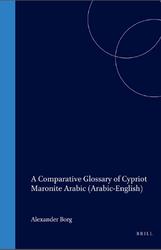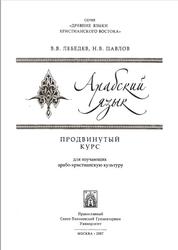The present work introduces learners to translation from English into Arabic through a wide range of practical exercises. Offering a variety of texts and multiple drills, it aims for learners to be able to develop and refine their translation skills. The book introduces learners to drills related to the translation of texts within basic genres and covers translation sub-skills. It aims to present an efficient and practical approach to learning the skills of translating different text types from English into Arabic. While most of the published translation books tend to focus on the theoretical aspects of translation from the source text (ST) to the target text (TT), this book follows a practice-based approach in order to assist learners in utilising the concepts and theoretical frameworks that they have acquired. Some theoretical aspects of translation are introduced in the first four modules, but readers are urged to consult other books that elaborate on these theoretical aspects at greater length.

Communicative Translation.
This type of translation attempts to render the exact contextual meaning of the original text in such a way that both content and language are readily acceptable and comprehensible to the reader. It is particularly suitable when translating conventional formulae or proverbs and involves a certain level of cultural approximation. Communicative translation aspires to create the same effect on the TL reader as that created by the SL text.
Although it is not as accurate as semantic translation, which adheres to the original text, it communicates the meaning at the expense of accuracy. However, it is preferred by many translators, because it resorts to concepts that are more familiar to the TL reader on the cultural and social levels. It is often used for culturally specific idioms, proverbs or cliches, where the translator replaces a SL word or concept with one that already exists in the TL. Communicative translation concentrates on the message and the main force of the text, tends to be simple, clear and brief, and is always written in a natural and resourceful style (Newmark (1988: 48). For some linguists, communicative translation 'is produced, when, in a given situation, the ST uses a SL expression standard for that situation, and the TT uses a TL expression standard for an equivalent target culture situation' (Dickins et al. 2005: 17).
Contents.
Using this Book Structure of the Book Map of the Book.
Module 1: Introduction to Translation.
1.1. Introduction.
1.2. Etymology and Definition.
1.3. History of Translation.
1.4. Basic Translation Concepts.
1.5. Foundation Methods of Translation.
1.5.1. Word-for-Word Translation.
1.5.2. Literal Translation.
1.5.3. Faithful Translation.
1.5.4. Communicative Translation.
1.5.5. Adaptation.
1.5.6. Free Translation.
1.6. Conclusion.
1.7. Module Review Exercises.
Module 2: Machine Translation.
2.1. Introduction.
2.2. Concept and Emergence.
2.3. Machine Translation Approaches.
2.3.1. Rule-Based Machine Translation (RBMT) Approach.
2.3.2. Empirical Machine Translation Approaches.
2.4. Machine Translation Engines.
2.5. Generic Machine Translation Platforms.
2.5.1. Google Translate.
2.5.2. Microsoft Translator.
2.5.3. Bing.
2.5.4. Yandex.
2.6. Customised Translation Engines.
2.7. Adaptive Machine Translation.
2.8. Conclusion.
2.9. Module Review Exercises.
Module 3: Arabic and English Grammar in Translation.
3.1. Introduction.
3.2. Word Order.
3.3. Tense and Aspect.
3.4. Cohesion.
3.5. Conclusion.
3.6. Module Review Exercises.
Module 4: Literary Translation.
4.1. Introduction.
4.2. Fiction.
4.2.1. Narrative Texts: Discourse Problems.
4.2.2. Narrative Texts: Syntactic Problems.
4.2.3. Cultural Problems, Domestication and Foreignisation.
4.3. Drama.
4.4. Poetry.
4.4.1 Strategies for Translating Poetry.
4.5. Conclusion.
4.6. Module Review Exercises.
Module 5: Economic Texts.
5.1. Introduction.
5.2. Features of Economic Discourse.
5.3. Translation Problems and Strategies.
5.4. Neologism.
5.5. Metaphor in Economic Discourse.
5.5.1. Terminology: Marketing.
5.5.2. Terminology: Investment.
5.5.3. Terminology: Banking.
5.5.4. Terminology: Accounting and Audit.
5.6. Conclusion.
5.7. Module Review Exercises.
Module 6: Scientific Texts.
6.1. Introduction.
6.2. Translation Strategies.
6.2.1. Borrowing.
6.2.2. Coinage.
6.3. Translation Problems and Practical Steps.
6.3.1. Problems of Word Level Equivalence.
6.3.2. Problems above Word Level Equivalence.
6.3.3. Textual Equivalence: Cohesion and Coherence.
6.4. Translating COVID-19.
6.5. Conclusion.
6.6. Module Review Exercises.
Module 7: Media Texts.
7.1. Introduction.
7.2. Features of Media Texts.
7.3. Translating Conflicts and Wars.
7.4. Translating Uprisings and Revolutions.
7.5. Translating Elections and Political Participation.
7.6. Translating Natural Disasters.
7.7. Conclusion.
7.8. Module Review Exercises.
Module 8: Administrative Texts.
8.1. Introduction.
8.2. Translating Guidelines and Regulations.
8.3. Learning and Teaching Regulations.
8.4. Translating CVs and Applications.
8.5. Conclusion.
8.6. Module Review Exercises.
Module 9: Legal Texts.
9.1. Introduction.
9.2. Types of Legal Texts.
9.3. Translating Legal Texts.
9.4. Security Council: Terms and Conditions and Peace Agreements.
9.5. Translating Agreements and Contracts.
9.5.1. Rights and Copyrights: Terms and Conditions.
9.5.2. Memorandum of Agreement.
9.5.3. Multiparty Negotiations.
9.5.4. Tenancy Agreements.
9.6. Translating Family Law Agreements and Testaments.
9.6.1. Marriage Contracts.
9.6.2. Divorce Settlement Agreements.
9.6.3. Child Custody Agreements.
9.6.4. Last Will and Testament.
9.7. Conclusion.
9.8. Module Review Exercises.
Bibliography.
Бесплатно скачать электронную книгу в удобном формате, смотреть и читать:
Скачать книгу Advanced English Arabic Translation, A Practical Guide, Lahlali E.M., Hatab W.A., 2022 - fileskachat.com, быстрое и бесплатное скачивание.
Скачать pdf
Ниже можно купить эту книгу, если она есть в продаже, и похожие книги по лучшей цене со скидкой с доставкой по всей России.Купить книги
Скачать - pdf - Яндекс.Диск.
Дата публикации:
Хештеги: #учебник по арабскому языку :: #арабский язык :: #Lahlali :: #Hatab
Смотрите также учебники, книги и учебные материалы:
Следующие учебники и книги:
Предыдущие статьи:











